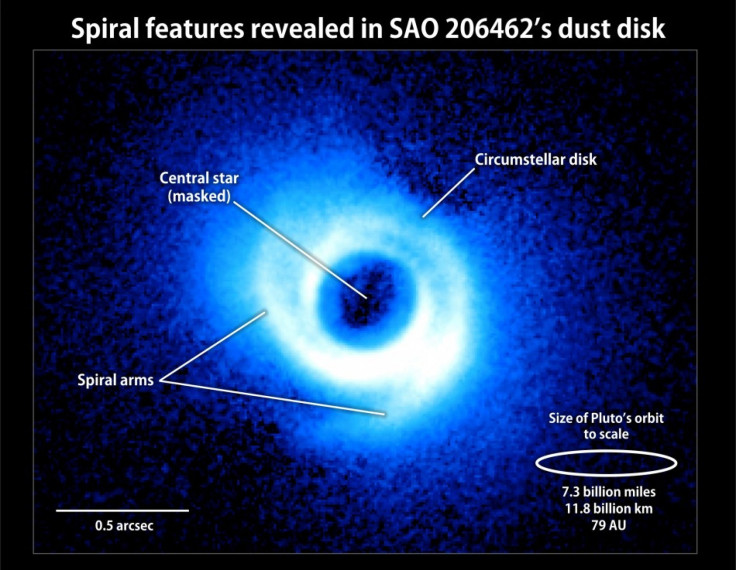Spiral Arms Hint at the Presence of Planets
A Distant Star May Be Helping Form Planets

A new image of the disk of gas and dust around a sun-like star has spiral-arm-like structures, and these features may provide clues to the presence of embedded but as-yet-unseen planets, the National Science Foundation said in a statement.
"Detailed computer simulations have shown us that the gravitational pull of a planet inside a circumstellar disk can perturb gas and dust, creating spiral arms. Now, for the first time, we're seeing these features," Carol Grady, a National Science Foundation (NSF)-supported astronomer with Eureka Scientific, Inc said.
The newly imaged disk surrounds SAO 206462, a star located about 456 light-years away in the constellation Lupus. Astronomers estimate that the system is only about 9 million years old. The gas-rich disk spans some 14 billion miles, which is more than twice the size of Pluto's orbit in our own solar system.
"The surprise," Grady said, "was that we caught a glimpse of this stage of planet formation. This is a relatively short-lived phase."
A near-infrared image from the National Astronomical Observatory of Japan shows a pair of spiral features arcing along the outer disk. Theoretical models show that a single embedded planet may produce a spiral arm on each side of a disk. The structures around SAO 206462 do not form a matched pair, suggesting the presence of two unseen worlds, one for each arm. However, the research team cautions that processes unrelated to planets may also give rise to these structures.
Grady's research is part of the Strategic Exploration of Exoplanets and Disks with Subaru (SEEDS), a five-year-long near-infrared study of young stars and their surrounding dust disks using the Subaru Telescope atop Mauna Kea in Hawaii.
© Copyright IBTimes 2024. All rights reserved.





















